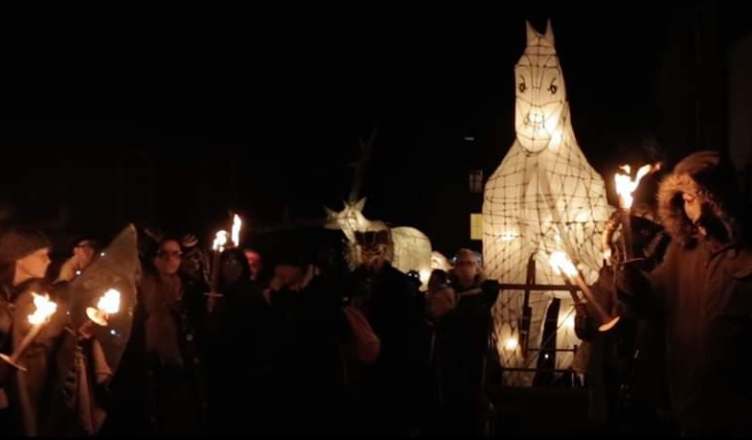
It’s always a delight to find yourself surprised by a film, and The Droving – despite its use of elements which immediately call certain other films and subgenres to mind – manages to surprise throughout. Intensely character-driven, it largely keeps its horror off-screen, or represents it solely through its lead. In so doing, it weaves a very subtle and engaging story.
Martin (Daniel Oldroyd) has just left the Army after five years’ service, but his decision to try civilian life again has been shaken by the disappearance of his beloved younger sister, Megan (Amy Tyger), who appears to us only in Martin’s memories of happier times. Returning to the Penrith area of Northern England to seek clues about what happened to her precisely a year earlier, he’s quickly on the trail of what, at least at first, seems like a bunch of likely candidates. Mutual friend Tess (Suzie Frances Garton) informs him that a group of outsiders referred to as a ‘clan’ make it their business to appear in town ahead of the yearly winter Droving Festival (a genuine British tradition linked to winter agricultural markets which has hung on in there as a local event). As Megan disappeared right before the previous Droving, it certainly seems suspicious. Rumours of strange beliefs on their behalf only fuel Martin’s determination to find them; he tracks them to their last-known whereabouts – a local ruin, naturally. Also, do these people have faintly unsettling animal masks? Check.

A lesser film would have thereby pitched Martin against a closed community whose knowledge and instrumental power far exceeds his own here; this, to its great credit, it does not do. For starters, Martin is no naive wanderer; he’s a veteran, and with form as a military interrogator he is used to getting the answers he wants, as well as being more than able to look after himself. In short, no one is putting him in a wicker man (a film comparison I have read a few times, actually, but one which from my perspective isn’t a good fit). As Martin follows his trail here and there, it’s mood that prevails over massive shifts in narrative, with Martin’s barely-repressed or sometimes openly-expressed monomania for tracking down his sister expressed almost exclusively through his own words and deeds. Oldroyd does incredibly well with what he’s given. Very naturalistic, very engaging, he does the tricky thing of enacting acting throughout the film – never showing his hand, but using his military skills and ability to create characters to make people talk. There is a lot of very British black humour in the script, too, which nonetheless doesn’t detract from his plight and doesn’t confuse the tone. Sure, he finds the beginning of his trail of answers quite easily, but you could never say that the film moves from there to wholly expected terrain.
Another impressive feature of The Droving is in its new folk horror dynamic: gone is the small community who are all ‘in on it’, to mutual benefit, or at least perceived mutual benefit. Here, people who might have arcane knowledge (and it’s never ever about showy big reveals or protracted ritual practices) seem sorrowful about it – they wish they didn’t know, wish they didn’t talk, didn’t keep the old beliefs going. These novel elements help to generate and sustain the tension, because they free the film of the kind of expectation which can work against what the film is aiming to do. A subtle sense of horror unfolds. If you are willing to keep with it, filling in the blanks, then there is more than enough to reward your attention (and this is a nicely economical story, too, at just eighty minutes long).
Beautifully shot against a rugged, austere landscape, matched just as beautifully by its soundscape, The Droving is an evocative and often ambiguous horror: here you will find unexpected flashes of originality and a willingness to tease out elements of its key ideas and motifs, developing them in fascinating ways.
The Droving was released on 21st April in the UK. It is available now via Amazon Prime.
